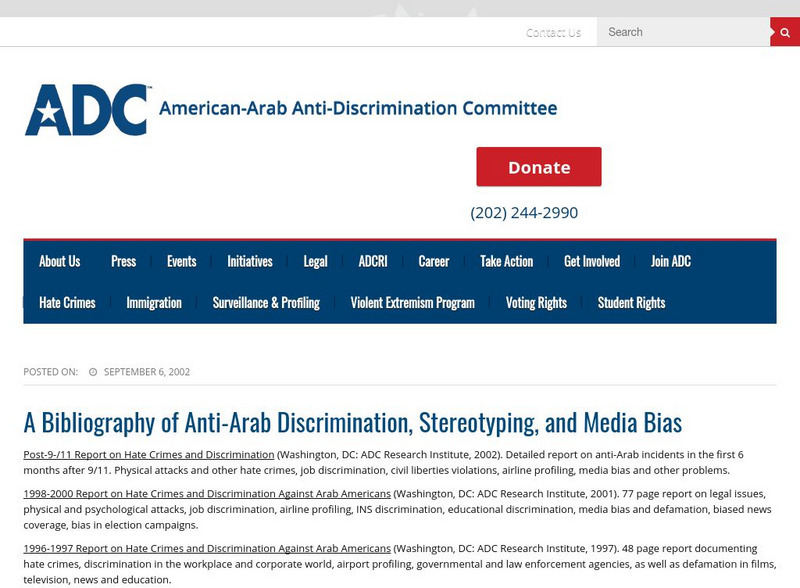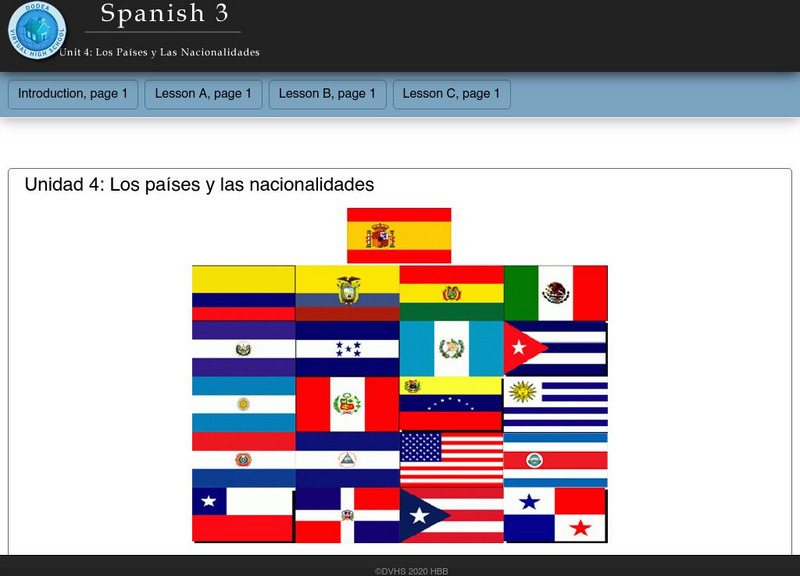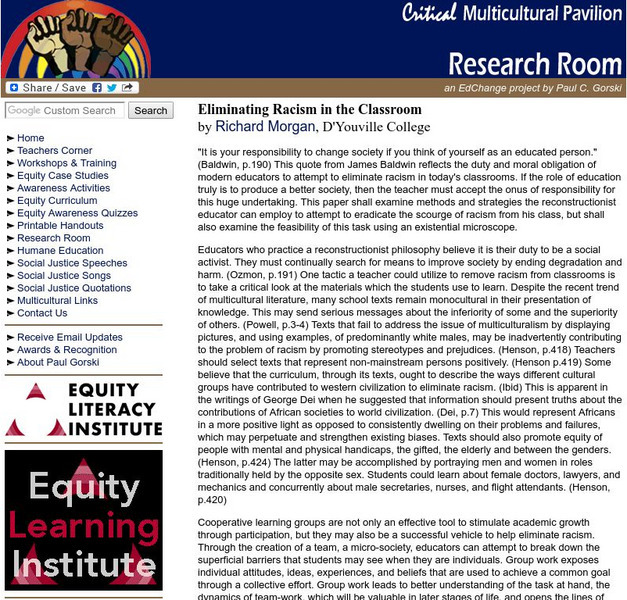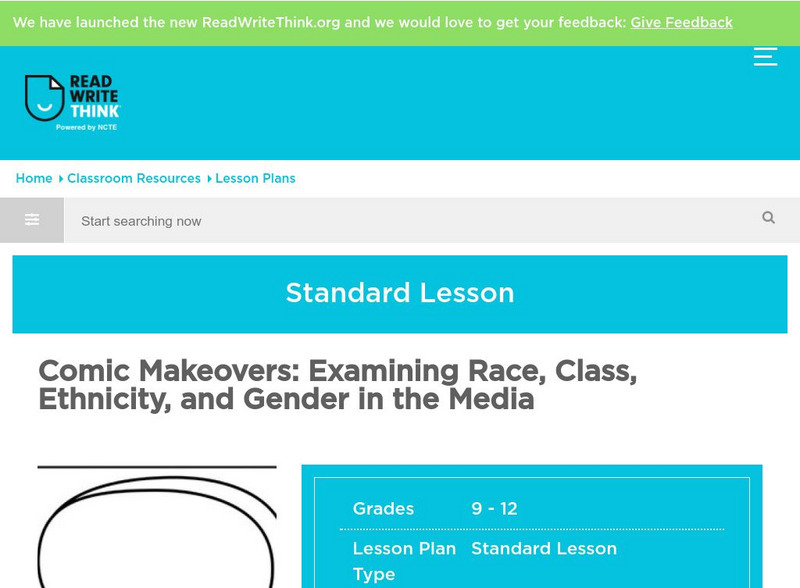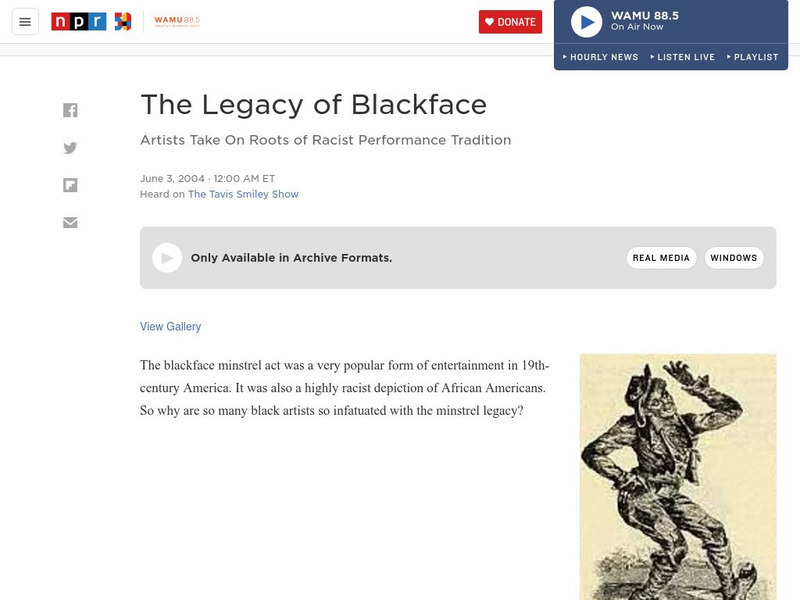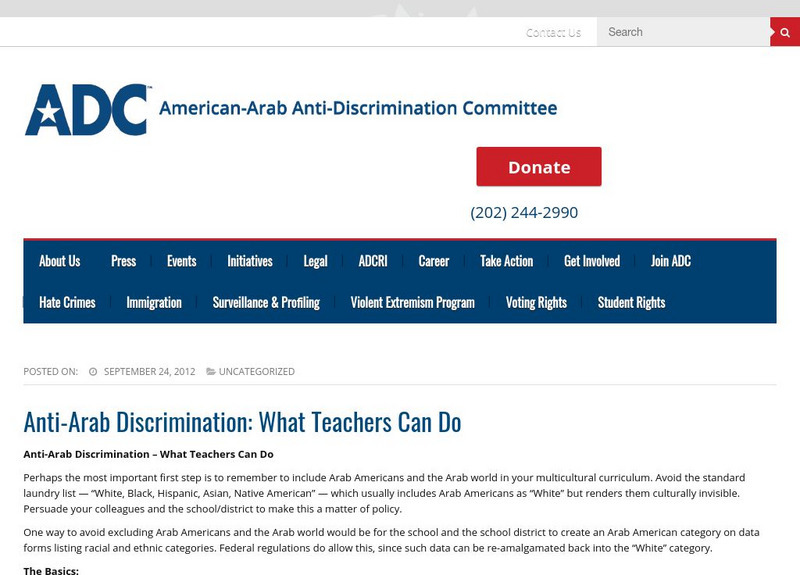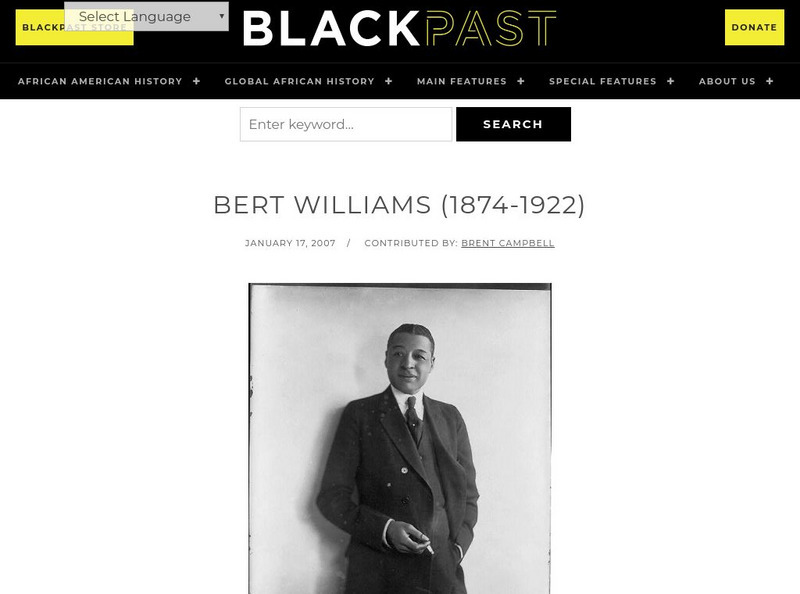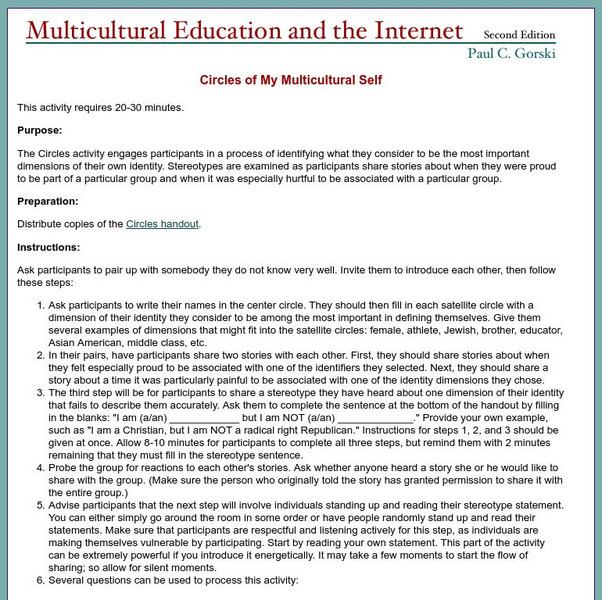Other
Anti Discrimination Committee: Bibliography of Media Bias
This is an online bibliography of works dealing with Anti-Arab discrimination, stereotyping, and media bias. It includes government reports and ADC reports as well as scholarly works.
Department of Defense
Do Dea: Spanish 1: Unit 3: El Tiempo
In this third unit of an introductory Spanish course, students learn to have a written conversation with someone about the weather and their locations, to communicate about seasons, to speak about themselves, use clothing and other...
Department of Defense
Do Dea: Spanish 3: Unit 4: Los Paises Y Las Nacionalidades
In this learning module, students learn how to talk about familiar people and places, actions taking place now, stereotypes, and weather. They will practice using the preterit and imperfect, irregular verbs, articles with adjectives as...
Other
For Many, One: Passing From Light to Dark
This scholarly article looks into the treatment of race and ethnicity in the 1920s and how they were handled in popular culture. Read about stereotypes of African Americans and immigrants from Asia and southern Europe and find out how...
Smithsonian Institution
Smithsonian: National Museum of the American Indian: Battle of Little Bighorn
The Battle of Little Bighorn made an immense impression on American society and culture. Americans became obsessed with this battle and created artworks, shows, postcards, and dime novels. View primary sources from this era to understand...
Friesian School
Fresian.com: Stereotypes
This site gives an essay regarding various prejudices. Very informative and easy to understand.
Other
Eliminating Racism in the Classroom
This article provides some insight into ways to teach children about the negative effects of racism and the importance of doing that.
Other
Exploring Definitions: Discrimination, Racism & Sexism
A challenging exercise to help students define prejudice, discrimination, racism, sexism, and homophobia in their own words.
ReadWriteThink
Read Write Think: Examining Race, Class, Ethnicity, and Gender in the Media
Contains plans for five lessons that teach students how to recognize and avoid stereotyping in media. In addition to objectives and standards, this instructional plan contains links to sites used in the lessons as well as assessment and...
Other
Family Law Center: Gender Bias in the Family Courts
This paper focuses on the subject of gender bias against men in reference to gaining custody of children in the Canadian Family Court system. The article does a good job at defining the bias and presenting examples of the myths and...
PBS
Billy Wilder: Film Noir Inventor and Genius
This site is a lesson plan focused on post-World War II America and the film making career of Billy Wilder. Details on the Film Noir genre and its reflection of shifting American values. Click to a biography and timeline of Billy...
Common Sense Media
Common Sense Media: Education: Cracking the Gender Code: Grades 6 8
Students explore "boy codes" and "girl codes," and discuss the extent to which they shape people's online identities and relationships. Requires free membership.
Common Sense Media
Common Sense Media: Education: Gender Stereotypes Online: Grades 6 8
Students are introduced to the concept of gender stereotypes, in both an online and offline context. Students identify and discuss gender stereotypes in the "Dress Up Your Avatar" feature of a kids' virtual world. Free membership required.
Common Sense Media
Common Sense Media: Education: The Reality of Digital Drama (6 8)
Students discuss their impressions of peer drama, both online and as depicted on reality TV. Students compare and contrast two videos - one featuring a candid discussion between middle school students about online drama and the other...
NPR: National Public Radio
Npr: The Legacy of Blackface
This site is an NPR two-part report for the Travis Smiley Show explores the history of Blackface and it's impact on society both past and present. There are related stories on Hip-hop and Racial Harassment.
Other
What Is a Worldview?
A detailed article about how humans develop a "worldview" and how they see themselves in the world interacting with other people. A worldview can be religious or non-religious.
University of Colorado
University of Colorado: Conflict Research Consortium: Prejudice Reduction Programs
Information on the suppression of stereotypes and elimination of prejudice.
Jewish Museum
Jewish Museum: Examining Identity in Contemporary Art and Photography [Pdf]
This website contains photographs of many in the multicultural community of Jews in the United States. There are discussion questions and cross-curricular links for integration of culture into your curriculum. A glossary is also included.
Other
Anti Discrimination Committee: What Teachers Can Do
This site lists ways to combat bias and stereotypes of Arabs and Arab Americans in the curricula or with students of all ages. Includes a brief bibliography of suggested works on multicultural education.
Wisc-Online
Wisc Online: The Reality of Sterotypes
In this learning module, the user will understand how believing in and using common stereotypes can get in the way of working together. It also offers an exercise on stereotyping.
Black Past
Black Past: Bert Williams
This encyclopedia article gives a good overview of the life of Bert Williams, a black entertainer of the early 1900's who broke many color lines.
McGraw Hill
Circles of My Multicultural Self a Classroom Activity
Activity helps students identify what they consider to be the most important parts of their own identity and develop a better understanding of stereotypes.
CommonLit
Common Lit: Themes: Men & Women: How Do We Define the Roles of Men and Women?
This is a collection of Grade-Leveled texts (3-12) to address the question, "How do we define the roles of men and women?" Select a grade level and a collection of on grade-level reading passages on the topic comes up. [Free account...
Khan Academy
Khan Academy: Terms and Issues in Native American Art
Stereotypes persist when discussing Native American arts and cultures, and sadly many people remain unaware of the complicated and fascinating histories of Native peoples and their art. Read examples of these stereotypes and what changes...


